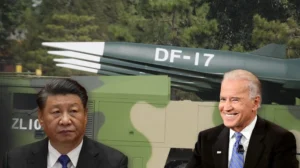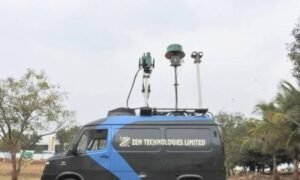“We believe that a lot of their so-called civilian space program is a military program. And I think, in effect, we are in a race,” Nelson remarked, as reported by The Guardian. He voiced hopes that China would recognize the importance of maintaining space as a realm for peaceful pursuits.
Contrasting Approaches to Space
China operates its own space station, Tiangong, manned by a crew of three astronauts, in contrast to NASA’s collaborative management of the International Space Station (ISS) alongside partners from Europe, Canada, Japan, and Russia.
Concerns Over Lunar Exploration
Nelson also shared concerns that China could potentially reach the Moon ahead of the US and monopolize lunar resources, echoing his previous statements in 2022. This assertion had drawn criticism from Chinese experts who accused Nelson of harboring a “colonial mindset.”
Ambitious Lunar Objectives
Amid these tensions, both nations have ambitious lunar objectives. NASA, along with its international partners, plans to establish sustainable lunar bases and aims to land astronauts on the Moon by 2026. Conversely, China has set its sights on sending astronauts to the Moon by 2030, highlighting the competitive nature of the ongoing space race.
Tiangong Space Station: China’s Space Ambitions
The Tiangong space station, also known as “Heavenly Palace,” is China’s modular space station orbiting Earth. It represents a significant step in China’s ambitions to become a major space power, marking their independent capability to maintain a long-term human presence in space. Here are some key details about Tiangong:
Modular Design
Similar to the ISS, Tiangong is modular, meaning it is built in sections or modules, which are assembled in orbit. The core module, named “Tianhe,” serves as the living quarters and control center. Additional modules provide facilities for science experiments and expanded living space.
Construction and Expansion
The station’s construction began with the launch of the Tianhe module in April 2021. China plans to expand Tiangong by adding more modules over the next few years, aiming for a fully operational and habitable space station by around 2022-2024.
International Collaboration
While primarily a national project by China, there have been discussions and indications that China might open up the station to international astronauts and researchers, promoting international collaboration in space exploration.
Scientific Objectives
Equipped for various scientific research activities in fields such as astronomy, Earth observation, and biological sciences, Tiangong includes state-of-the-art facilities for conducting experiments in microgravity and other space-specific conditions.
Strategic Significance
The development of the Tiangong space station is part of China’s broader space strategy, which includes missions to the Moon and Mars. Tiangong not only enhances China’s capabilities in space but also serves as a symbol of national pride and technological advancement.
The remarks by NASA Administrator Bill Nelson underscore the escalating competition between the United States and China in space exploration. As both nations pursue ambitious goals in lunar exploration and space station development, the future of space exploration is poised for significant advancements, albeit with geopolitical tensions looming overhead.
(With inputs from Agencies)







